| Umělec 2001/3 >> Over the Edge of Reality | Просмотр всех номеров | ||||||||||||
|
|||||||||||||
Over the Edge of RealityUmělec 2001/301.03.2001 Tomáš Pospiszyl | exhibition | en cs |
|||||||||||||
|
"Science fiction and fantasy literature form a rather clearly defined genre whose core readers make up a closed community. Their internal codes and style may appear almost ridiculous to outside observers. The lives of hard-core fans reflect their efforts to live, at least in part, in the same parallel worlds described in their favorite books, and they support each other in this endeavor. Coming together, of course, is a natural phenomenon for any hobby, from bee keeping to collecting.
At the beginning of July, Gallery Mladá Fronta in Prague put on the show Fantasy in Images, an exhibition presenting original works by thirteen Czech artists inspired by sci-fi and fantasy literature. Most of the works were typical for the world of illustration, whether intended for books or the few local magazines that specialize in these themes. This exhibition was essentially a meeting of fans. Parcon, the traditional assembly of Czech sci-fi fans, has been taking place for decades in different parts of the country. Following a boom at the end of the 1980s and beginning of the 1990s, the Czech sci-fi/fantasy scene diminished, concentrated and condensed. But the most recent Parcon in Prague saw thousands of participants, mostly youngsters but also a healthy peppering of adults in their prime. Fans from outside Prague didn’t think twice about spending several uncomfortable nights in sleeping bags in a rented gym. Considered decadent, or at the very least trivial, since its inception, the genre has proved solid and, as it turns out, capable sometimes of producing work that is significant and inspiring in the context of culture as a whole. The sci-fi genre absorbs stimuli from a variety of areas that for ages now have included much more than just cosmic flights and new technologies. The literature influenced by J. R. R. Tolkien and R. Howard created significant impetus. Authors often delve into the prehistory of the planet; they create alternative worlds of invented mythologies that link to and appropriate elements and forms from mythologies created long ago by existing nations. Because illustrators have also inherited heroic and knightly visions from similar themes in the history of art, they find this tendency very comfortable to work with. Fantasy art in the last decade evolved chiefly under the influence of the rapid and successful emergence of cyberpunk and that sub-genre inspired by the development of electronics and computing, which explores and develops the connections that can be drawn between computers and the human world. Cyberpunk already boasts its own visual esthetic, influenced mainly by film, and it is in turn through film that cyberpunk is returning to “standard” society. Parcon also gives much space to those interested in Japanese animation. This year’s panel devoted three uninterrupted days to this theme. At two in the morning, some of the exhausted participants were nodding off right in the projection room, in the light cast by the constantly running projectors. The exhibition at Gallery Mladá Fronta was hardly the first opportunity to see works by fantasy artists. In addition to mass-distributed reproductions and illustrations, they regularly exhibit in galleries like the one in Prague bookstore Krakatit. But what art critic would stray into those places? All of the artists showing at the exhibition Fantasy in Images work in the style of descriptive realism. You won’t come across abstraction or any stronger formal style here. The works are mainly focused on their fantastic subject, which would be needlessly disrupted and weakened by a braver approach. Furthermore, the artists’ impulse is not that of self-preoccupied artistic innovation, but basically a chance to tell a story using images. Collage-like compositions register as the only “modernist” element, bringing together various realistic scenes. The exhibited works are otherwise full of cliches of content and form, but viewers scarcely mind at all — in fact, they tend to expect them. The artists recklessly appropriate and manipulate characters created by someone else (Alien, characters from the Star Trek series). They basically treat the figures as if they were living beings, and consider the issue of copyright ridiculous, as if copyright could protect a living person’s image. But you can also come across thefts from classical works of art and surrealism, though this is only true of widely known, recognizable images, such as works by Arcimboldo or Salvador Dalí. A number of images also show traces of appropriation or inspiration from advertising calendars and soft-porn magazines. The women portrayed, without exception, bear gigantic breasts and are scantily clad. By contrast, the men are scruffy, beefy characters in space suits or armor. The artists see no reason why a naked (or barefoot) beauty cannot appear with an astronaut wearing a helmet and space boots. There would be no point in making a detailed account of all the “mistakes” that the artists make, because they do not usually have an education in art. They have achieved their final results through their own diligence, unburdened by academic rules of perspective and composition. For instance, Bauer’s Fight, which features a pair of monsters, looks as if it is happening next to some kind of midget dwelling. Or as if both of the monsters have somehow bulged to gigantic proportions that far exceed the height of the desert skyscrapers. And what to make of the strange scale used in illustrating the boneless human body, of which only a flawlessly arched backbone and perfectly preserved skull remain? But these are mere details that divert our attention from the dramatic fight scene in which the monsters are gentlemen enough to use only one arm, perhaps so as not to foul themselves with their adversary’s slimy blood. A number of artists, however, do work with dramatically conceived irony. For the cover of the magazine Ikarie, issue 9/2000, Vladimír Gajdoš created a scene capable of pummeling every patriotic male sci-fi fan with a barrage of ambiguous emotions. A busty woman, holding a Scorpio machine gun and wearing nothing but a sheer net cloth that can only be described as a halter, stares provocatively into the viewer’s eyes. She’s kneeling in what appears to be the Vltava River, judging from the smashed Charles Bridge and bombarded castle in the background. Given the circumstances, the woman’s gaze aptly illustrates what Breton called “mad love.” All constraints and inhibitions are gone. Concerning the figure’s scale, one can only speculate as to whether she is a giant kneeling in water — perfectly capable of blowing the castle to pieces or booting it to the burning heavens — or whether we are looking at a scene taking place in front of a huge model of Malá Strana. The water laps at her ankles, and if she were only to reach out she could straighten the tilted cross on the bridge. Then again, we are probably just dreaming. Vladimír Gajdoš’ creative range also highlights the possibilities inherent in the applied fantastic arts. In addition to illustrations, Gajdoš airbrushes his works onto cars and motorbikes; he has also made several murals. (For more works by Vladimír Gajdoš see http://airbrush.mysteria.cz.) Of all the artists exhibiting in Gallery Mladá Fronta, Milan Fibiger comes closest to the world of “normal” art — perhaps because he graduated from the Decorative Arts College in Prague. His paintings are sophisticated and technically flawless; some of them work with light effects, which could be distant allusions to the work of the 19th-century Czech painter Vojtěch Hynais. His photo-realism and careful rendition of detail are probable references to his biggest role model: the Czech illustrator and painter Zdeněk Burian. Fibiger’s personal website divides his work into illustrations (further categorized as Adventure, Fantasy, and Fairytale) and free art — the most individual of all his work. The images mostly focus on male-conceived eroticism, emphasizing mystery and perfectly rendered female breasts. But he, too, dispenses with any relation between the scale of the figures and their surroundings. If you have ever visited Venice and seen a gondola, you would be shocked to see a more than eight-meter-long Venus taking in the sun on a gondola in a Venetian canal. Is she lying on the poor gondolier? Obviously the point of the painting is not to give a realistic rendition of the given scene. It is using exaggerated mannerism to show the principle of confrontation between two opposing elements. (For more works by Milan Fibiger see http://web.quick.cz/fibiger.) Translated by Vladan Šír. "
01.03.2001
Рекомендуемые статьи
|
|||||||||||||
|
04.02.2020 10:17
Letošní 50. ročník Art Basel přilákal celkem 93 000 návštěvníků a sběratelů z 80 zemí světa. 290 prémiových galerií představilo umělecká díla od počátku 20. století až po současnost. Hlavní sektor přehlídky, tradičně v prvním patře výstavního prostoru, představil 232 předních galerií z celého světa nabízející umění nejvyšší kvality. Veletrh ukázal vzestupný trend prodeje prostřednictvím galerií jak soukromým sbírkám, tak i institucím. Kromě hlavního veletrhu stály za návštěvu i ty přidružené: Volta, Liste a Photo Basel, k tomu doprovodné programy a výstavy v místních institucích, které kvalitou daleko přesahují hranice města tj. Kunsthalle Basel, Kunstmuseum, Tinguely muzeum nebo Fondation Beyeler.
|







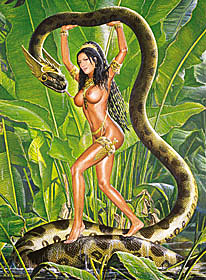
























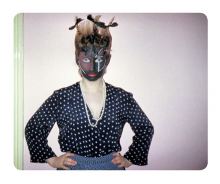
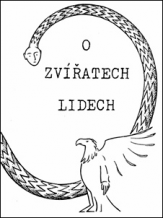
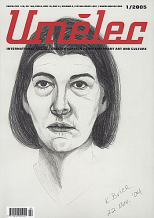
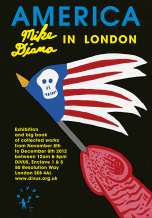


 New book by I.M.Jirous in English at our online bookshop.
New book by I.M.Jirous in English at our online bookshop.
Комментарии
Статья не была прокомментированаДобавить новый комментарий